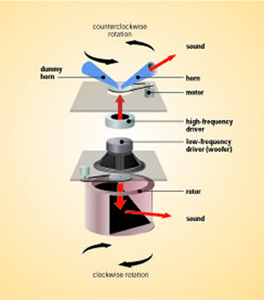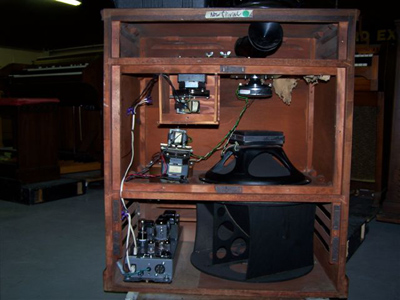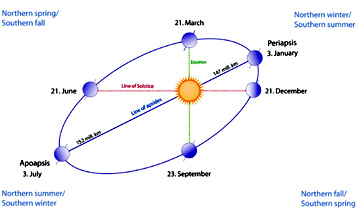
The signs
of the Zodiac are simply Earth's own resonances in the sky...
By John Townley, March 2015
The first thing anyone hears about
astrology in the pop
columns is Sun signs (and signs in general), which while not being the
whole
story are a major part of astrology. And yet it’s the last
thing any real
astrologer actually has a good explanation for, and is the subject of
much
argument, from astrologer and debunker alike. Is it about
constellations
(sidereal), seasons (tropical); does it come from out there, or in
here; is it
the same everywhere (Northern and Southern hemispheres); is it
permanent, or does
it change with time?
We’ve asked the
questions
that clarify the options and given
suggestions
for a physical approach that answers all of these, which is a little
complex
and theoretical, but for some, here’s a more hands-on, or
ears-on, approach.
We’ve
consistently
compared the cycles of the planets – from
the slowest and outermost (245+ years) to the subsets of the 24-hour
diurnal
cycle – to waves
and cycles at more
familiar scales ,
like music (cycles per second), rhythm (beats
per minute), and visible light (a much higher, single octave). What
gives all
three their discernible variations is not only speed but their phase
and how
they interact with each other.
 Earth's rotation puts a regular ripple in
it's overall orbital tone, which changes phase over the year to produce
the signs.
Earth's rotation puts a regular ripple in
it's overall orbital tone, which changes phase over the year to produce
the signs.In no place
is that more obvious
than simple musical tone.
When amplified electric musical instruments first came into major play
in the
1960s, what you did with your amplifier and speaker had a lot to do
with the
distinct stylistic “sound” you had. A simple
electric guitar sound could be
pretty plain and monotonous, but with the right amp and speakers,
everything
changed. First came distortion, which took a fairly simple tone/wave
and pushed
it out of whack, causing all sorts of interference and push-pull at
multiple
frequencies – think fuzztone, funky blues, heavy metal sound.
Lower that to a
planetary level, and it’s Earth’s own cycle getting
constantly modified, pushed
and pulled, by the other planets. Literally, physically, it’s
closely
analogous. At a shorter scale, it’s also similar to winds in
the sky
and tidal waves in the
ocean, playing their own rock and roll, at the behest of both diurnal
and
lunar
cycles.
But
there’s another level
of everyday musical timbre that
comes from simply two signals interacting: it’s called
phasing. In fact, if
you’re a pop musician, you’re probably familiar
with effects plug-ins variously
labeled phaser, chorus, flange, and the like. They’re all
now electrical
processors, but the original was actually mechanical – a
revolving speaker
cabinet called a Leslie. It took the speaker amplifying the simple
sound from a
Hammond organ and spun it around on an axis, just like the
Earth’s. The effect
was to raise and lower the perceived pitch rhythmically, due to the
Doppler
effect. This is rather what the spin of the Earth does to its yearly
frequency,
and the tilt of the Earth changes how that relative 365:1 interplay
occurs as
the poles either point to the Sun (at solstice) or don’t (as
at equinox),
giving not only a Doppler effect, but a warbling 23½ degree
varying phase shift
as well, as the spin of the earth's surface alternately adds to or
subtracts from
the
orbital frequency, which varies with time of day and season. And how
does this
divide up in a generally circular pattern? In sixes and twelves, as we explained here,
not
unrelated to
the larger Lagrange
divisions.


The Leslie cabinet for the Hammond organ reproduces the orbital phase
effect, producing varying, rich tonal textures.So, the
astrological result is
twelve different segments
that “sound” distinctively different, when the Sun or
anything else appears to pass through them, simply sharing their
general angle of incindence to Earth's spin. In a
perfectly
balanced and circular system, that would make the Northern and Southern
signs
interchangeable, but Earth’s orbit is not exactly circular,
but slightly
elliptical, and it isn’t precisely centered on the Sun, but
is closer in the
winter than summer. In addition, the greatest gravitational pull
outside of our
system (the Galactic Center) is on only one side, parallel to neither
our spin nor revolution, so the forces playing on our system are in no
fashion bilaterally
symmetrical. The result is a set of twelve segments in time and
space
each of which has its own unique and distinctive timbre determined by
our changing
diurnal angular motion in relation to where we are along the ecliptic.
In fact, when you consider the multi-directional motions
we are making through space and how they mesh with the forces driving
them, pushing and pulling us and each other around, it's a wonder the
signs
are as consistent as they are. For a wonderful tour-de-force,
explanations and animations, on that, go here, don't miss it.
Still,
although over
the millennia and around the world different civilizations have
given
these distinct segments/signs different names, they
individually tend to retain their basic
perceived qualities across cultural and historical borders. In the
course of twenty million years, much of this changes and evolves (as
may
the meanings of the signs, given tie), but in our shorter snapshot term
of
recorded human history, it's all the same.
And of
course, there’s
another, distracting middle-scale
body between the Earth’s revolution and rotation cycles, and
that’s the Moon,
which throws in its own addition to the sound. So much so that to some,
it’s
considered the main spatial divider – the 28 daily mansions
of the Moon are
China’s choice for spatial location, while their twelvefold
animal Zodiac is
actually a division of time (an 11.858 yr. Jupiter cycle,
entrainment-tuned by
the solar cycle to 12). India uses both the 12 and 28 divisions, and
the West
in modern times uses almost exclusively the 12. But regardless,
what’s
happening is a modification of one orbital period (or
“sound”) by another,
which gives unique, qualitatively identifiable signatures to the
multiple segments
of each.

 Our orbit is not circular(l), but
elliptical(r), also seasonally off-center, making each sign have its
own, unique phase/texture.
Our orbit is not circular(l), but
elliptical(r), also seasonally off-center, making each sign have its
own, unique phase/texture.Curiously
enough, the Leslie
speaker noted above has a very similar triple
configuration, in which a set of faster, high-frequency spinning
speakers (1)
mix with a slower, lower-frequency spinning sound baffle (2) to modify
the
basic organ sound (3), closely analogous to the diurnal and lunar
modifications
of Earth’s own signal. One could have been patterned after
the other. Here’s a short
video
of it in action, another historical short explanation, and
here’s an extensive outline
of its inner workings. Fun stuff, and astonishingly exemplifies the
principle.
All in all,
at a much slower rate,
the planetary symphony is
highly akin to what we experience as music, and the individual
planetary notes
have their own pitch and timbre based on frequency and phase, for us
further modulated
by Earth’s own diurnal/orbital filter. And, like music,
sometimes they blend
nicely, and at other times, when the waves themselves are beating
against each other, it can seem
more like a storm of cacophony!
Finally, the
similarities across the board seem to indicate
a repeating pattern of interrelationships at multiple scales which all
follow a
similar set of rules, with the lower frequencies tending to entrain
the higher. Just as a drumbeat turns into a musical tone when scaled
higher (and then, higher than that, light), the multiple scaling of
much slower/lower orbital and rotational cycles mix together to make up
distinct overtone series and thus the quality and texture of the signs
themselves. As above, so below,
indeed, and all very physical (though also very complex) in nature.

Not
a
newsletter subscriber already? Subscribe
Free
Here!
And
every day, keep in touch with our Astrology In The News section...please
take a look! --
Breaking news from
around the globe, plus articles, reviews, it's all happening there,
changes daily..

